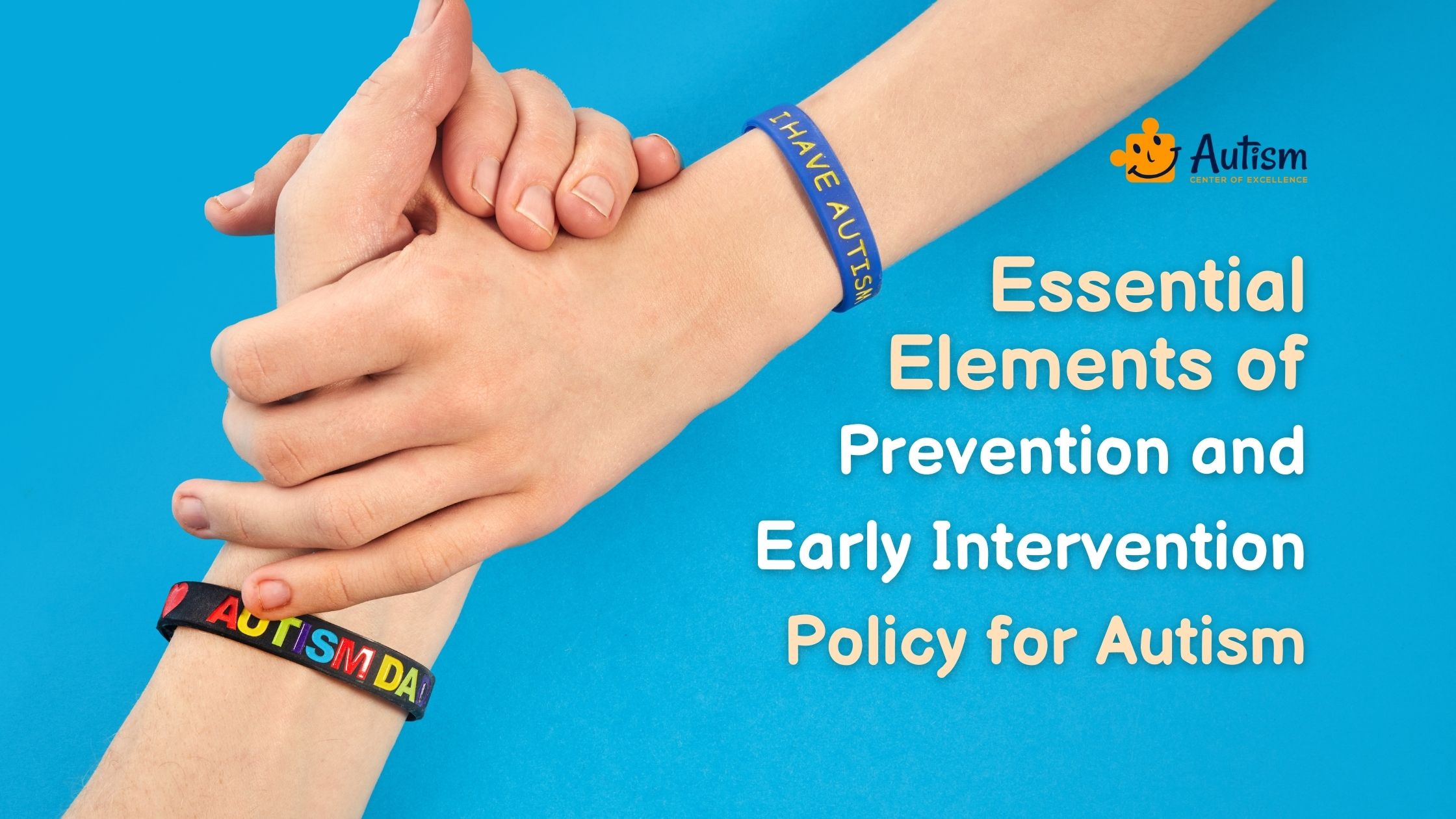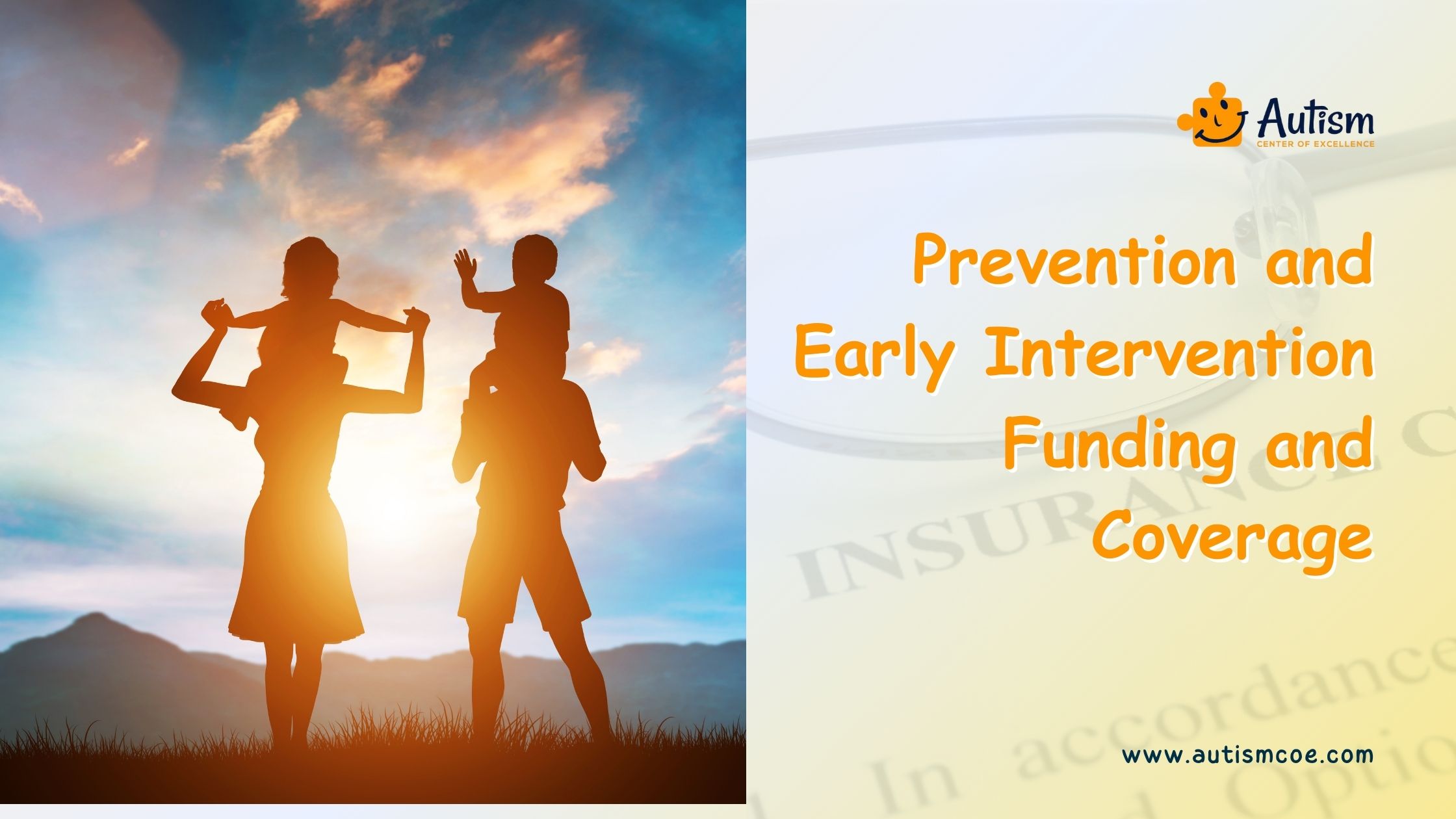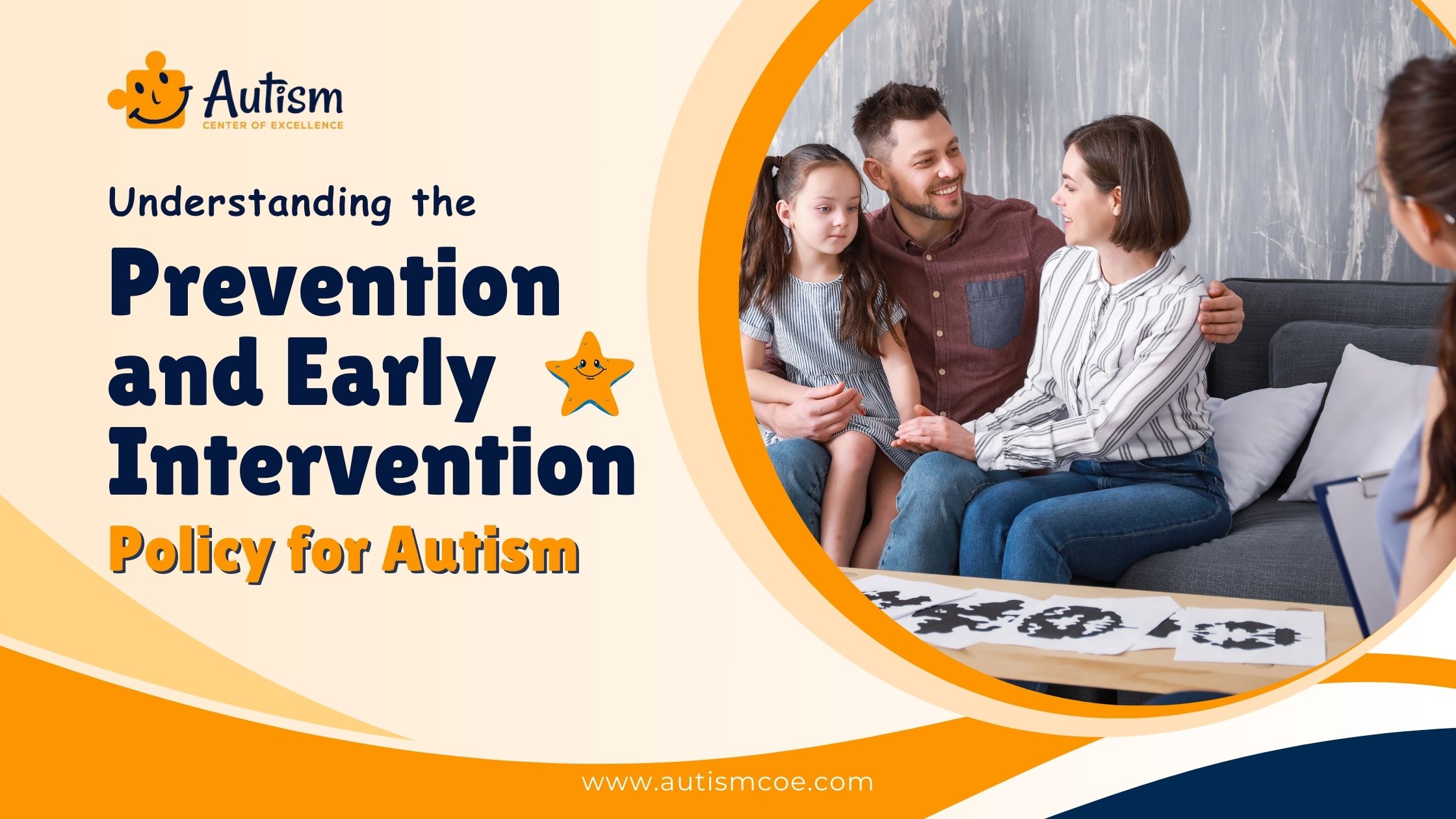The world of autism has its special challenges and rewards for parents. It’s a journey that requires time, comprehension, and continuous support. The necessary information and help are the prerequisites. This enables parents to have a better idea of their child’s world, to be the voice that the child needs, and to try to create a home that is suitable for the development of the child. This article is all about breaking down the Prevention and Early Intervention Policy for Autism, which is a key part of providing support and services to Kids with Autism and their families.
The Core of Autism Policy
The core of the Autism Policy is the early detection of Autism Spectrum Disorders in a child’s life and the timely intervention that can significantly improve the outcomes. Governments and health organizations everywhere have admitted the significance of Early Detection and Intervention, which has resulted in the development of policies that are aimed at supporting children with autism and their families from the very beginning.
The Importance of Early Intervention
The studies always prove that early intervention can significantly change the life of a child with autism. The Early Intervention Services are developed to deal with the special requirements of young children who have autism, which include ABA Therapy, Speech Therapy, occupational therapy, and Behavioral Interventions. These services not only help the child’s development but also give the families the tools and knowledge they need to support the child’s growth and health.

Key Components of Prevention and Early Intervention Policy
The Prevention and Early Intervention Policy for autism consists of a number of elements that are intended to provide complex support for children with autism and their families. The comprehension of these components is very important for parents and caregivers to be successful in their advocacy and to get the needed services for their children. The policy foundation comprises the following elements:
Early Screening and Diagnosis
The availability of Early Screening Tools and diagnostic services to discover autism spectrum disorders at the earliest time possible, hence, the intervention is timely.
Individualized Intervention Plans
Formulation of tailored Intervention Plans adapted to the specific requirements of each child, which are mainly in the areas of communication, social skills, and behavior.
Multidisciplinary Approach
A diverse team of professionals should be included in the planning and implementation of the intervention programs including therapists, educators, and medical professionals to offer complete support.
Family-Centered Services
Acknowledgment of the significant role of families in the intervention process and giving them the resources, education, and support to be active participants in their child’s development.
Inclusive Education
The awareness and support for inclusive educational environments that are for the learning needs of children with autism and that help them to be socially integrated and to achieve their academic goals.
Continuous Monitoring and Adaptation
Periodic review and amendment of the intervention plan to be in step with the child’s development and changing requirements.
These units are the main building blocks of successful autism policies, which is the reason why the children get the necessary early support to have a fulfilling and productive life.
How Policy Supports Families
The Autism Policy Initiatives are the key to creating a system that will make sure that children and families have access to the needed services. These policies are the ones that require the Provision of Early Intervention Services, the standards for care are set and the funding is often provided to make these services available to everyone, no matter what their income is. Through the support of comprehensive autism policies, communities can be sure that every child with autism will have the chance to get to the highest level possible.

Prevention and Early Intervention Funding and Coverage
Funding and coverage of the prevention and early intervention services in autism care are the key elements that give families the chance to get the support and treatments that are needed for their child’s development. The main sources of financial support are government allocations, health insurance policies, and private funding. These funds are the main source for covering the expenses connected with the diagnosis of the cases, the therapy sessions (like speech therapy, occupational therapy, and behavioral therapy), and the Autism Support Services.
In many regions, laws require that Health Insurance Policies Cover Autism Services so that the necessary treatments and interventions that are known to be effective for those with autism spectrum disorders are included in the health insurance policies. Besides, the Government Policies for Autism are meant to be a complement to the insurance coverage, thus, they are targeted at the underinsured families or those with financial problems, so that no child is left without the necessary care due to cost limitations.
Navigating Autism Policy Initiatives
Understanding the specifics of autism policy in your area can be very confusing. Nevertheless, knowing the main points of these policies can make you an advocate for your child. Here are some steps to get started:
Research Local Laws and Regulations
Each area has its own rules for Autism Therapy Services. It is important to know what services are in your area and how to get to them.
Connect with Local Autism Organizations
Most of the non-profit organizations provide resources and help for the families of people with autism. They can be a source of advice on how to go through the autism policy and get the services.
Engage with Healthcare Providers
Pediatricians and Specialists in Autism can be of great help in the first intervention programs and show you how to use the policy initiatives for the best of your child.
Stay Informed About Policy Changes
Autism policies can change, therefore, it is important to be aware of the changes and new initiatives. Participation in the parent advocacy groups will keep you informed.
Join Our Weekly Newsletters!
Subscribe now to stay updated with our latest email updates.
What is the Center for Prevention and Early Intervention?
The Center for Prevention and Early Intervention (CPEI) is a government agency that is keen on the development of children with autism by providing Early Intervention Services. This center closely collaborates with families, healthcare providers, educators, and other interested parties to ensure the accessibility of good services and Support for Children with Autism from a young age.
They also work together with the policymakers to persuade and introduce the autism policies that are the best for the community. Thus, families can view CPEI as a useful tool to comprehend and get the early intervention programs and support services that are provided in the frameworks of the state-funded projects.
Additional Resources for Navigating Autism Policy:
🌐 Autism Speaks
🌐 Autism Society of America
🌐 National Autism Association
The Impact of Autism Advocacy
Parental advocacy is a key factor in the formation of autism policy. Through the expression of the demands and problems children with autism and their families face, parents can affect the policy changes and ensure that the rights and needs of the mentioned group are properly considered. Through local school boards, government bodies, or autism advocacy groups, you can be a part of the advocacy efforts and this will result in a lot of improvements in the support and services available to children with autism.
Prevention and Early Intervention in North Carolina and Virginia
North Carolina and Virginia have been acknowledged for their full-scale autism policies that focus on early intervention services. In North Carolina, the General Assembly has approved a law that requires insurance companies to cover autism treatments that include ABA (Applied Behavior Analysis) Therapy. Apart from that, the state also set up a state-wide Early Intervention Network to give help and resources to the families of children with developmental delays or disabilities.
In the same way, Virginia has passed a law that health insurance companies should cover the Treatments of Autism. The state also has an Early Intervention system that is meant to help the development of children with special needs. These policies have greatly improved the lives of families and individuals who are affected by autism in these states.
Frequently Asked Questions & Answer
What is the Difference Between Prevention, Intervention, and Treatment?
- Prevention: Ways to lower the chances of problems such as mental health disorders before they occur.
- Intervention: The initiatives for the early detection of the problems with the goal of preventing their further development.
- Treatment: The ways to treat the symptoms of the current diseases through diagnosis and therapy.
Do You Get Money If You Have Autism?
In the U.S., people with autism may be eligible for financial aid through programs like Social Security Disability Insurance (SSDI) or Supplemental Security Income (SSI) that depend on the disability’s impact on work capability. The eligibility and benefits are based on specific criteria, which include the medical documentation.
What is the ADA Act for Autism?
The Americans with Disabilities Act (ADA) includes autism in the list of disabilities thus it prevents discrimination and ensures equal opportunities in public life. This is the definition of the term reasonable adjustments in work and education to make it possible for those individuals with autism to work or be educated.
How Many People Does Prevention and Early Intervention Cover?
Prevention and Early Intervention (PEI) programs are for a large number of people but mainly for youth under 25, for the provision of multidisciplinary and integrated healthcare. Although the figures are different for each of the programs, the major challenge is to reach a large part of this group. Detailed data on PEI coverage is not available, however, it is easy to see that the PEI projects influence the lives of millions of people around the world. They concentrate on the prevention of mental health disorders, child abuse, and juvenile delinquency before they get worse.
Conclusion
The Prevention and Early Intervention Policy for Autism is the main pillar for the help of children with autism and their families. By comprehending and participating in these policies, parents can be sure that their kids will get the Early Intervention Services they need to succeed. Keep in mind that you are not the only one on this path. A community of healthcare providers, educators, and other parents is there to help you and your child every step of the way.
Navigating the path of autism with your child can be a complex process, but understanding the frameworks in place, such as the Autism Early Intervention Services offered by AutismCOE, can significantly ease this journey. Parents who keep themselves informed and involved can really make a difference in the development and life of their children.
Please Note: The content of this blog is for informational purposes only and should not be considered a substitute for professional medical advice, diagnosis, or treatment. Consult a qualified healthcare professional for personalized guidance tailored to your specific situation.

Bhavika Bhasin
Bhavika Bhasin is the Research and Marketing officer at AutismCOE. She works with children and adults with ASD. Her clinical research includes evaluating various available autism screening and diagnosis methods and their efficacy. She is currently developing a novel screening exam that is indicated to be more accurate than the existing available exams. She is also writes articles papers for various publications.


